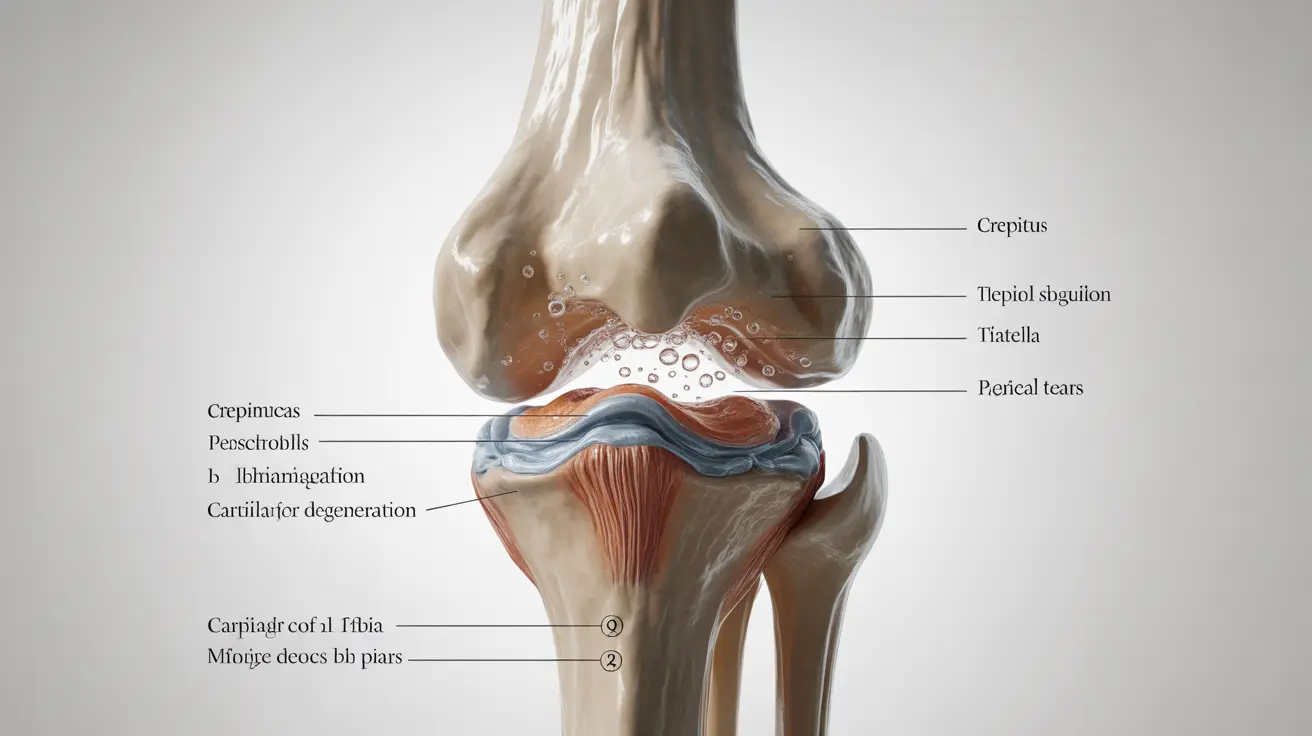Joint crepitus, characterized by crackling, popping, or grinding sensations in your joints, is a common condition that many people experience. While these sounds and sensations can be concerning, understanding their causes and implications is crucial for maintaining joint health and knowing when to seek medical attention.
Whether you're experiencing crepitus in your knees, shoulders, or other joints, this comprehensive guide will help you understand what's happening in your body and how to address any related concerns effectively.
Understanding Joint Crepitus and Its Causes
Crepitus occurs when air bubbles form within joint fluid or when rough joint surfaces move against each other. This phenomenon can happen in any joint but is most commonly noticed in knees, shoulders, and ankles. Several factors can contribute to joint crepitus:
- Air bubbles in synovial fluid
- Roughened cartilage surfaces
- Ligament or tendon movement
- Arthritis-related joint changes
- Previous joint injuries
Types of Crepitus and Their Significance
Harmless Crepitus
Many instances of joint crepitus are benign and don't indicate a serious underlying condition. This type typically:
- Occurs without pain
- Happens during normal joint movement
- Doesn't affect joint function
- May come and go naturally
Pathological Crepitus
Sometimes, crepitus can signal an underlying joint condition, particularly when accompanied by:
- Persistent pain
- Swelling around joints
- Reduced range of motion
- Weakness in the affected area
Managing and Treating Joint Crepitus
When crepitus causes discomfort or concern, several management strategies can help:
Conservative Treatment Approaches
- Gentle stretching exercises
- Low-impact physical activity
- Proper joint alignment during activities
- Weight management for joint health
- Regular movement throughout the day
Professional Treatment Options
If crepitus is accompanied by pain or limited mobility, healthcare providers might recommend:
- Physical therapy
- Anti-inflammatory medications
- Joint mobilization techniques
- Targeted strengthening exercises
- Lifestyle modifications
Prevention and Long-term Joint Health
Taking proactive steps to maintain joint health can help prevent or minimize crepitus:
- Maintain good posture
- Practice proper exercise form
- Stay physically active
- Maintain a healthy weight
- Include joint-supporting nutrients in your diet
Frequently Asked Questions
What does crepitus feel like, and is it a sign of a serious joint condition?
Crepitus typically feels like clicking, popping, or crackling in your joints. While often harmless, it can indicate a serious condition if accompanied by pain, swelling, or reduced mobility. Always consult a healthcare provider if these additional symptoms occur.
How do you treat crepitus when it causes pain, and what are some common management strategies?
Treatment options include physical therapy, gentle exercises, anti-inflammatory medications, and lifestyle modifications. Management strategies focus on maintaining proper joint alignment, strengthening surrounding muscles, and reducing inflammation when present.
Can regular exercise help alleviate joint crepitus symptoms, and what are the best exercises for this?
Yes, regular exercise can help manage crepitus by strengthening the muscles around joints. Low-impact activities like swimming, cycling, and targeted strengthening exercises are particularly beneficial. Always start gently and progress gradually.
Is crepitus a reliable indicator of osteoarthritis, and what other symptoms should I look out for?
While crepitus alone isn't a definitive indicator of osteoarthritis, when combined with joint pain, stiffness, reduced range of motion, and swelling, it may suggest the condition. Additional symptoms to watch for include morning joint stiffness and pain that worsens with activity.
How can I prevent or reduce the risk of developing crepitus and related joint issues like osteoarthritis?
Prevention strategies include maintaining a healthy weight, staying physically active, using proper form during exercise, avoiding overuse of joints, and ensuring adequate nutrition for joint health. Regular stretching and strengthening exercises also play a crucial role in prevention.




